Throwback Thursdays – 11/29/18
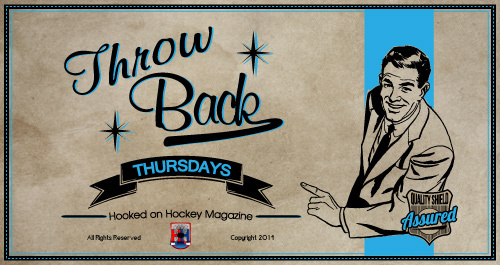
More Cowbell?
Don’t tell that to Fred Waghorne. In fact, he became so disconcerted with the use of cowbells in early hockey games that he became the first ref to use a whistle to stop play. This allowed him to overcome all of the cowbells in the crowd that ne’er-do-wells brought to distract opposing players or just create a ruckus in general.
That is just one of the many stories of Fred Waghorne; referee extraordinaire and thrilling topic of the 2nd installment of the current Throwback Thursday series.
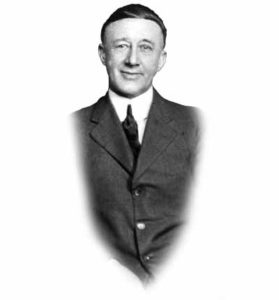
Last week I may have put you to sleep with my extended introductory article, which clocked in at a whopping 1200 words. Sorry about that.
“Waggers,” as I shall call him (his real nickname “Wag,” was boring), was born in – and is the pride of – Tunbridge Wells, England in 1866. Tunbridge Wells had a thing for Canada around that time. It also produced one of Canada’sGovernor Generals, and candidate for most English name ever, John Douglas Sutherland Campbell. They also managed to churn out some guy named Sid Vicious, who did something with some band named the Fornication Guns – or something to that effect.
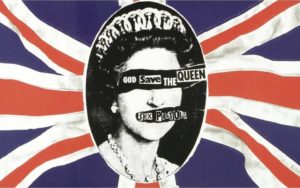
Anyways, I promised I would keep this article shorter so… long story short, Waggers moved to Canada, settled in Toronto, was big into sports and thus got into hockey — that’s quality, in-depth journalism, folks.
In accordance with that amazing tale of Waggers’s adolescence, he eventually became so involved in athletics in the Toronto area that he founded a league called the Toronto Lacrosse Hockey League, a multi-purpose, four-team league that served as a lacrosse league in the summer and a hockey league in the winter. As the story goes, hockey grew in popularity, and the league soon became the Toronto Hockey League. This was the predecessor to the Beaches Hockey League (also co-founded by Waggers), which then became the Metropolitan Toronto Hockey League, and then the Greater Toronto Hockey League. To this date, the GTHL is the largest minor hockey organization in the world and has produced such talents as this guy:

And this guy:
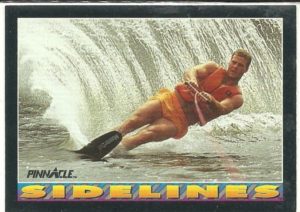
And this guy:

And this guy:

And many, many, more. That’s a good enough story as is, which brings us to the conclusion of this article.
Just kidding.
Waggers, along with founding the predecessor to the GTHL (one of the premier NHL star pipelines), and calling for less cowbell during his career, also had a few more notable achievements. I will list these below in point form for the sake of brevity (I hear your snores – after all, this is the age of having an attention span shorter than a goldfish).
At Waghorne’s time, hockey was a very different sport. There were rovers, there was no forward passing, goalies weren’t allowed to go down, and many other crazy rule changes. In fact, during Waggers’ career as a Referee, a good majority of rinks were outdoors; with the luxurious indoor rinks being lit by gas lamps, which were notorious for creating dark spots on the ice.
As Waghorne himself once said: “A few of the rinks were lighted by coal oil lamps, and the corners were dark pockets. It was in rinks of that type that the art of puck-lifting was at its peak. The Pete Charltons of the day lofted the puck up to the rafters, beyond the goalkeeper’s vision. Often the rubber seemed to drop from the roof, right in front of the surprised goalkeeper, then bounced crazily into the net. Some players could lift from end to end.”
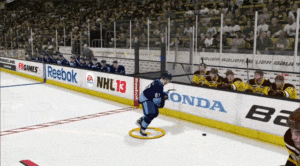
He even makes it seem like it was difficult to fire a puck from end-to-end. Hockey was indeed a far cry from the format we know it today, but I digress. Without further ado:
– Waghorne, or Waggers as I have unilaterally decided is best suited, not only first brought about the introduction of the first hockey whistle, but was also around for the updated (and current) plastic model. The original was a metal whistle that would stick to referee’s lips in cold conditions – cold conditions, like a hockey rink.

-As in the subject of the first edition of my TBT covering the first professional hockey league, Waggers also was criticized by John Ross Robertson, president of the Ontario Hockey Assocation. Robertson put a vote forward to debar Waggers from refereeing games, as he had played professional lacrosse. Robertson felt that Waggers shouldn’t be allowed to referee amateurs as a result of his professional career. The motion was turned down after one member said “Mr. President, if we debar Mr. Waghorne, who will referee our final games?”
-Waggers created what is the current version of the face-off. Originally, refs would place the puck on the ice and then players would immediately go after the puck. This was a safety measure for the referees, as the prior method led to lots of bruises on the feet, shins, hands, and other… tender areas.

Waggers decided to drop the puck in order to escape most of the danger. The players also liked the change and thus, when the OHA adopted the rule, it became official that refs would drop the puck on face-offs.
-Hockey originally used two-piece pucks. Sometimes, the puck would split upon impact with either a stick, or the post, resulting in half of the puck going in the net. Waggers decided that half of the puck wasn’t a goal, as in his own words “the rule book says that a puck is 1″ thick, that piece of rubber that went into the goal was only ½” thick, so it couldn’t qualify as a puck. And if it wasn’t a puck, it certainly couldn’t have been a goal.” Waghorne’s ruling eventually led to the creation of the one-piece puck we know and love today.
I would finish the article off with my own words; however, I think the Hockey Hall of Fame summarizes Waghorne’s work justly: “Waghorne continued his contributions to hockey, lacrosse and rugby right up to his death in 1956 at the age of 90. He refereed over 2,400 hockey games and 1,500 lacrosse matches. He was elected to the Hockey Hall of Fame in the Builders category in 1961.”
Which actually concludes Waggers’s story. For your convenience, I also managed to cut the article down by over 200 words. You’re welcome to those of you who are still awake. Stay tuned for next week’s sleep aid/article!

